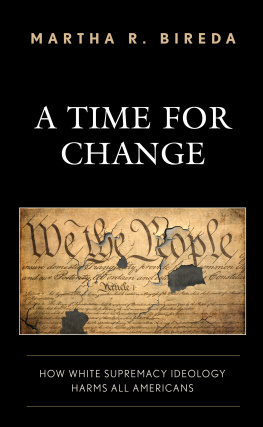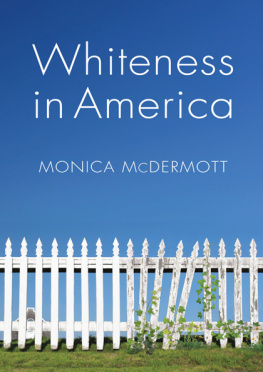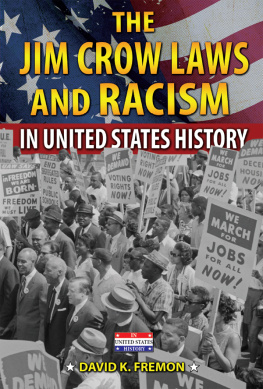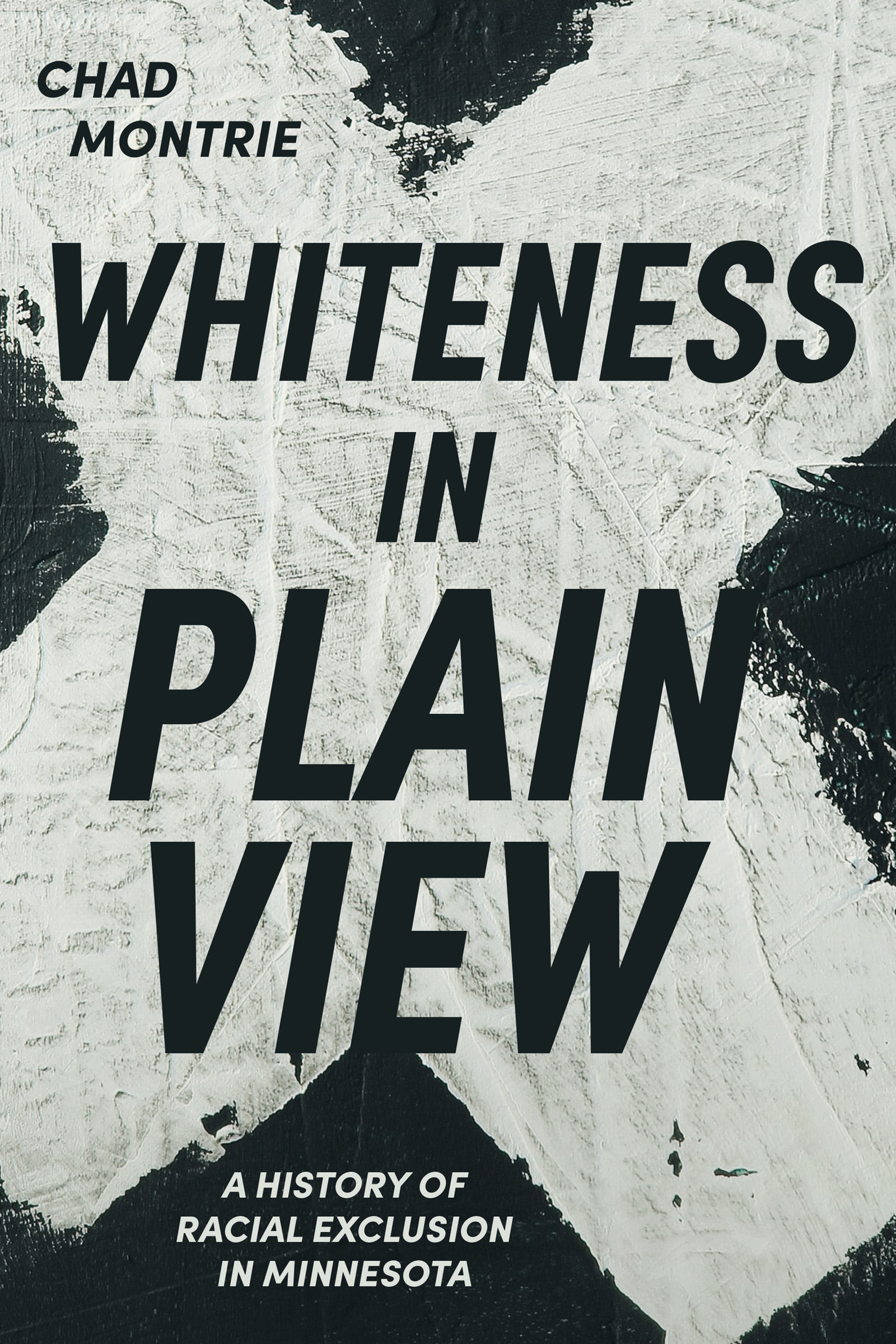Contents
List of Figures
Guide
Pagebreaks of the print version
WHITENESS IN PLAIN VIEW
A History of Racial Exclusion in Minnesota
CHAD MONTRIE

Text copyright 2022 by Chad Montrie. Other materials copyright 2022 by the Minnesota Historical Society. All rights reserved. No part of this book may be used or reproduced in any manner whatsoever without written permission except in the case of brief quotations embodied in critical articles and reviews. For information, write to the Minnesota Historical Society Press, 345 Kellogg Blvd. W., St. Paul, MN 551021906.
Unless otherwise credited, all images are from the collections of the Minnesota Historical Society.
Portions of this book have appeared in different form in the following publications:
A Bigoted, Prejudiced, Hateful Little Area: The Making of an All- White Suburb in the Deep North. Journal of Urban History 45, no. 2 (March 2019): 300320.
In That Very Northern City: Recovering the Forgotten Struggle for Racial Integration in Duluth, Minnesota. Minnesota History 67, no. 2 (Summer 2020): 7080.
mnhspress.org
The Minnesota Historical Society Press is a member of the Association of University Presses.
Manufactured in the United States of America.
10 9 8 7 6 5 4 3 2 1
 The paper used in this publication meets the minimum requirements of the American National Standard for Information SciencesPermanence for Printed Library Materials, ANSI Z39.481984.
The paper used in this publication meets the minimum requirements of the American National Standard for Information SciencesPermanence for Printed Library Materials, ANSI Z39.481984.
International Standard Book Number
ISBN: 978-1-68134-210-8 (paperback)
ISBN: 978-1-68134-211-5 (e-book)
Library of Congress Control Number: 2021950245
This and other Minnesota Historical Society Press books are available from popular e-book vendors.
CONTENTS
INTRODUCTION
In the context of the Negro problem neither whites nor blacks, for excellent reasons of their own, have the faintest desire to look back; but I think that the past is all that makes the present coherent, and further, that the past will remain horrible for exactly as long as we refuse to assess it honestly.
JAMES BALDWINAutobiographical Notes, Notes of a Native Son
THIS BOOK, as sociologist Avery Gordon might say, is a ghost story. Its primary aim, the purpose of acknowledging ghosts in our midst, is to fathom how we came to be haunted in the first place. Its secondary aim, what follows after we start seeing ghosts, is to use that awareness to put them to rest. Of course, by ghosts I do not mean actual spectral apparitions. Being haunted, in the sense that Gordon suggests and that I intend, is the animated state in which a repressed or unresolved social violence is making itself known. This unsettled state can and does take sundry forms, those singular yet repetitive instances when home becomes unfamiliar, when your bearings on the world lose direction, when the over-and-done-with comes alive, when whats been your blind spot comes into view. Still, Gordon insists, a haunting is not merely a newly roused sense, a feeling or perception of a historical wrong. When discernment finally begins to dawn, leaving us unmoored, it also transforms into something to be done, forcing a confrontation with the truth and forking the future and the past.
Whiteness in Plain View attempts to recover a particular occurrence of unresolved social violence, one chapter in the long and varied history of White Americans purposeful efforts to exclude African Americans from their midst. This shameful past left a fossilized geography of Whiteness in its wake, something that is both a presence and an absence at the same time. For many Whites living in the current moment, that history is unknown, or mistakenly known, or known but checked, and the racial uniformity they encounter daily in their neighborhoods, schools, government, and elsewhere remains, as another sociologist, Jim Loewen, has put it, hidden in plain view. It is impossible for them to see it, or to see its numerous facets and dimensions, until it is seen, and then it appears everywhere and in multiplicity. Confessing that the overwhelming Whiteness exists, and explaining how that Whiteness came to be, is the beginning of reckoning with what it means and, possibly, realizing the economic, political, and social reparations it requires.
Even more specifically, this book focuses on the practice of racial exclusion of African Americans in the state of Minnesota during the nineteenth and twentieth centuries. It details the ways White residents in towns, cities, and suburbs across the state acted to intimidate, control, remove, and keep out Black residents. Their methods ranged from anonymous threats, vandalism, and mob violence to restrictive housing covenants, realtor deceit, and mortgage discrimination. These actions were aided by support from local, state, and federal government agencies as well as openly complicit public officials. What they did was not a lapse or aberration, an isolated flare of hatred in a single place or a minor blemish on a largely clean record of welcome and acceptance. It was conventional and common, and the efforts at exclusion enjoyed shifting legal license from decade to decade. Additionally, the all-White communities that resulted became their own justification and propagating agent, demonstrating (to Whites) that Blacks wanted to live only among their own race, confirming (to Whites) that African Americans did not have the economic means to integrate, and supporting the notion (among Whites) that Blacks supposed racial failings must be what kept them out.
Whiteness centers on racial exclusion in Minnesota because for many Whites, at least until very recently, the pairing of the two is counterintuitive, and the states history speaks to a larger conversation about how race, or more exactly the attempted exercise of White supremacy, figures in standard regional distinctions. The popular rendering of the American South, as historians Matthew D. Lassiter and Joseph Crespino observe, often emphasizes how it is racially exceptional, attributing episodes of racism and racial violence there to the regions social and political structures, while portraying similar events elsewhere as anomalous. The corollary to this southern exceptionalism is northern exceptionalism, which, as another historian, Jeanne Theoharis, explains, frames manifestations of racism in the North as flaws in an otherwise liberal land of opportunity, rather than as a constitutive element of the regions culture, politics, and economy. And, at first glance, that does seem to describe Minnesota. Located in the upper reaches of the Great Lakes region, the midwestern state has always had a relatively small Black population, one that posed little threat in terms of competition with Whites for housing and jobs, suggesting there was never any material basis for significant racial animosity. Likewise, the state has a reputation for putting forward racially progressive White political leaders, such as Hubert Humphrey, and nationally recognized Black race advocates, such as Roy Wilkins, which hints at a general racial tolerance. On the contrary, however, neither fact allowed Minnesota to avoid a sordid racist past, stained by formal restrictions on rights, recurrent racial violence, and other calculated efforts to remove and exclude African Americans from whole neighborhoods and townsall of that grounds for challenging the exceptionalism mythology.







 The paper used in this publication meets the minimum requirements of the American National Standard for Information SciencesPermanence for Printed Library Materials, ANSI Z39.481984.
The paper used in this publication meets the minimum requirements of the American National Standard for Information SciencesPermanence for Printed Library Materials, ANSI Z39.481984.